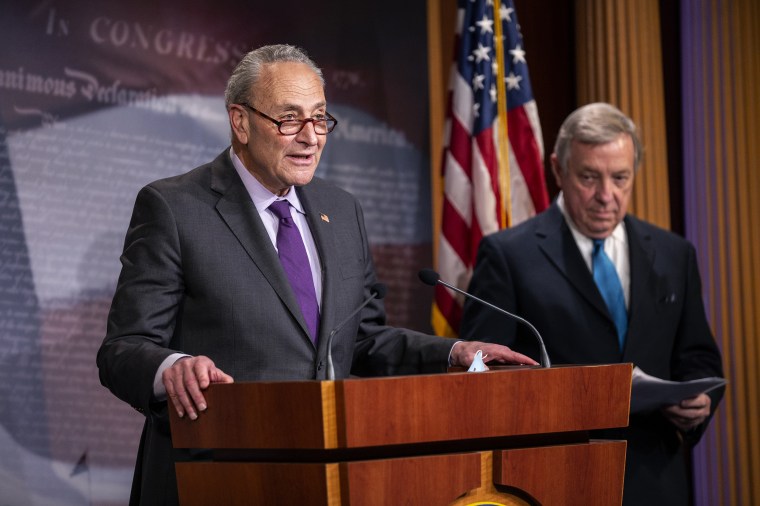In recent weeks, Democratic leaders have talked about using a process called the budget reconciliation process to pass an ambitious COVID relief package. The need for the tactic is obvious: Senate Republicans are prepared to kill the plan with a filibuster, and reconciliation will allow the Democratic majority to pass a proposal with 50 votes.
Yesterday, this stopped being abstraction. Roll Call reported:
The Senate voted to move forward with debate Tuesday on a budget blueprint that will set the stage for filibuster-proof passage of a massive coronavirus relief package. The 50-49 vote opens debate on the Democrats' budget resolution, which would carve out room for up to $1.9 trillion in additional deficit spending, as proposed by President Joe Biden, on top of $3.5 trillion enacted last year.
The final roll call from yesterday's vote is online here, but I'll save you the trouble of scrutinizing it: every member of the Senate Democratic conference voted for it, while every member of the Senate Republican conference voted against it -- except Sen. Pat Toomey (R-Pa.), who wasn't there. Had he participated, Vice President Kamala Harris would've broken the tie in Democrats' favor.
As a procedural matter, this was really just the first of many steps. As the ball gets rolling, here are some of the questions to keep in mind:
What's the next step? There will now be 50 hours of Senate debate, which appears unlikely to change any senators' minds.
And then? The process will culminate in something called a "vote-a-rama," which is a silly name for an exasperating process in which, thanks to arcane budget rules, senators push non-binding votes on literally hundreds of politicized amendments.
Once that's done, can the Senate vote on a COVID relief proposal? Not so fast. After the lengthy debate and the votes on the amendments, lawmakers will vote on a budget resolution. If that passes, then Congress will begin work in earnest on the legislation itself, knowing that it can pass, if necessary, with just 50 votes.
How long is this expected to take? It's very likely that the process will take up much of February.
When all is said and done, Democrats will probably end up passing a good bill, right? The odds lean in that direction, but I'd caution against assuming that success is inevitable. The differences of opinion among Democrats are considerable; the House Democratic majority is narrow; and in the Senate, if even one member of the Democratic conference doesn't like the final package for any reason, it'll die.
Indeed, Sen. Joe Manchin (D-W.Va.) talked to Fox News yesterday and continued to emphasize the importance of bipartisan cooperation. "I have made it very clear ... we're going to make this work in a bipartisan way," Congress' most conservative Democrat said. "My friends on the other side are going to have input. And we're going to do something that we agree on. I'm not just going to do it just down the lines of, just saying party-line vote."
None of this will be easy. A whole lot of struggling families, communities, and businesses will be counting on Democrats to eventually cross the finish line, but given the severity of the crisis, the scope of the response, and the non-existent margin for error, this will be a heavy lift.

